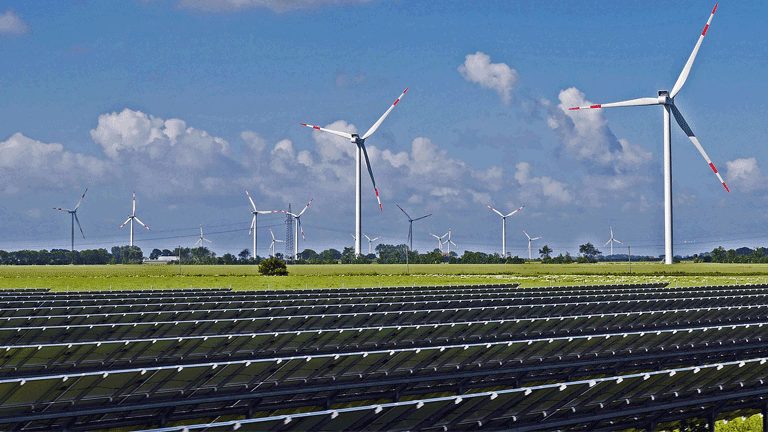In addition to the technological and financial benefits of cloud computing, there are often environmental benefits that are overlooked. It reduces energy consumption, waste, and carbon emissions. Cloud computing is not just a ‘technological thing,’ it has a noteworthy impact on society and the natural environment.
Microsoft Corporation partnered with WSP USA to conduct a study to determine how cloud computing reduces the carbon footprint related to computing. In a report titled ‘The Carbon Benefits of Cloud Computing: A Study on the Microsoft Cloud,’ the two organizations discovered that cloud computing has numerous environmental benefits. Microsoft cloud computing is 93% energy efficient and has 98% lower carbon emissions than on-site data centers. Below are five environmental benefits of cloud computing.
1. Reduces energy use
Few people understand the amount of power you need to operate an on-site data center. You need a constant power supply for your server, a cooling system to avoid overheating, and when equipment lifecycle ends, you have to dispose of them –adding to e-waste. The National Renewable Energy Laboratory (NREL) affirms that data centers consume approximately 1.8% of the overall energy consumption in the US each year. This translates to around 70 billion kilowatt-hours of electricity annually. The number is projected to increase to 73 billion kilowatt-hours by 2020.
Cloud computing reduces these figures significantly. Research funded by Google and conducted by Lawrence Berkeley National Laboratory in conjunction with Northwestern University revealed that transitioning commonly used software applications to the cloud would cut energy use by 87%. The saved energy could be used to power Los Angeles for a year. The study further affirmed that data center energy consumption would drop by 31% between 2010 and 2020 as more and more organizations shift to cloud computing. Notably, by reducing energy use, businesses can save 60-85% in energy costs.
2. Decrease greenhouse gases (GHG) emissions
Cloud computing cuts the amount of GHG emitted from data centers. A traditional on-site data center produces GHG throughout its life cycle including:
- Producing raw materials for the equipment
- Assembling the equipment
- Transporting the equipment to the on-site data center
- Using the equipment
- Disposing off the equipment when its lifecycle ends
Cloud decreases the rate of carbon emissions by reducing energy requirement and consumption. A survey conducted by Accenture, Microsoft and WSP revealed that cloud computing has a substantial effect on carbon emissions. It affirmed that by using cloud computing, large companies can lessen per-user carbon footprint by 30% and up to 90% for small enterprises. A CDP report contends that offsite services can reduce annual carbon emissions by 85.7 million metric tons. In 2010, Salesforce, an American cloud computing firm reduced carbon footprint by 170,900 tons of carbon. This figure is equivalent to eliminating 37,000 cars on the road.
3. Dematerialization
Cloud computing makes a positive contribution to sustainability through dematerialization. Dematerialization refers to the replacement of high-carbon physical products with virtual equivalents. This helps to reduce energy use and carbon footprint. Cloud services encourage people to use virtual services like video streaming as opposed to resource-heavy physical products. Migrating to the cloud means that you use fewer machine and hardware that use less energy and have a lower impact on the environment. Consequently, companies have lower energy bills and freed up capital to allocate to profitable projects. Cloud services help firms focus their time and effort on other tasks instead of daily IT tasks and issues.
Remarkably, by reducing physical products –equipment and hardware, cloud computing reduces the amount of waste emanating from the disposal of these products. Additionally, cloud computing helps organizations go paperless with the help of cloud storage options like DropBox, SharePoint and Google Drive. With cloud-based technologies like DocuSign, you don’t have to print documents to sign them. You just do it with a few clicks. Also, you don’t need to store paper documents because all documents are stored safely and securely in the cloud. By going paperless, you reduce the need to dispose of documents that has a negative environmental impact.
4. Data center efficiency
Today, more than ever, sustainability is crucial to business success and survival. Sustainability is leading the way to attain an eco-friendly and low carbon society. Cloud computing operates with greater efficiency than on-premises data centers. This results in efficient use of IT resources that have a positive outcome for the environment. Cloud computing is based on the concept of sharing services and hence maximizing the effectiveness of resources. Cloud computing centers use advanced technologies that are energy efficient. They use less energy for lighting, cooling, and power conditioning resulting in energy savings.
 5. Shift to renewable energy sources
5. Shift to renewable energy sources
Some cloud data centers have shifted to renewable sources of energy to power their operations and hence reduce their carbon footprint. They are using renewable sources of energy such as solar, geothermal, hydropower resources, and wind. A prime example of this is Agile IT partnering with Arcadia Power to fully power its headquarters and network operations center with wind power. Wind and clouds, it just makes sense.
Cloud computing offers businesses more than just a way to safely store data, increase efficiency, and reduce costs. It has substantial environmental benefits that are too many to ignore in an era where global warming and climate change are pressing issues. Cloud computing can save billions of dollars in energy costs and lessen carbon emissions by millions of metric tons. It presents businesses with the ability to reduce their energy consumption, cut their carbon footprint, and shift to a greener and smarter future. Are you looking for more green in your IT solutions? Contact a cloud service advisor to learn about the economic, environmental, and operational impacts a cloud migration can deliver.
Published on: .